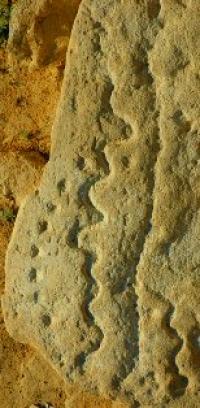You are here
Ustyurt and Mangistau petroglyphs.

Ustyrt tours in Kazakhstan.
“I've known rivers:
I've known rivers ancient as the world and older than the flow of human blood in human veins. My soul has grown deep like the rivers”
Langston Hughes.
Aktau city guides.
Ustyurt and Mangistau petroglyphs Rock drawings were found in the Ustyurt and Mangistau cretaceous mountains (Akmaya, Ayrakty) on open surfaces and in caves of Zhygylgan Cape on the north-eastern shore of the Caspian Sea.
They were carved on a soft cretaceous substrate. The location of most drawings in the Akmaya Mountains is related to traditional hunting trails and ambush places. They represent horses, camels, hunting scenes for wild animals (big-horn sheep, mountain goat, and cheetah) with the help of a primitive firearm, battle scenes, horse races, and others.
Many of these engravings are carved with great mastery, but human images are sketchy, while the main emphasis was on depicting the belongings of a mounted warrior. Frequently, they are accompanied by Arabic inscriptions.
From the accurately depicted realistic details (armor, horse harness, and a rider) and the epigraphy, most images are dated to the period of modernity (XVIIIth - XIXth centuries). Ethnographic graffiti on the walls of cultic and funerary sites – mausoleums, headstones, mosques, and others– are in a special category, specific to Ustyurt and Mangistau and widely spread there.
Depending on the dating and location of the sites, those images can be attributed to Turkmen and Kazakh tribes. In the specific natural environment of Mangistau desert areas, that served as a habitat for various ethnic groups of relatively modern nomads, a special type of site with lineage signs-tamgas on rocks is known under the common name of “tamgalytas”.
As a rule, they are near wells or good pastures and are found in the Tyupkaragan Peninsula near Ustyurt Chink (Masat-Ata, Tanbalytas). Quite often, in addition to tamgas, there are images of animals, riders, and geometric signs.
The signs of Turkmen and Kazakh tribes are predominant among these accumulations of tamgas. They are dated to the XVIIth - XIXth centuries, but some of them may belong to an earlier period.
Authority:
“Rock Art Sites in Kazakhstan”. Alexey E. Rogozhinskiy.







